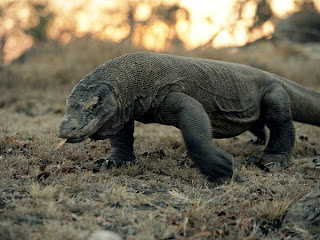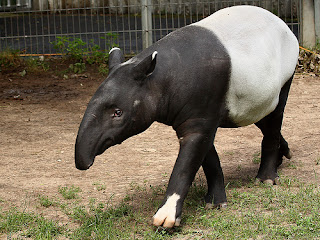The Blue ringed octopuses are extremely modest in size yet a standout amongst the most venomous marine living beings in the planet. They are discovered in the Australian southern coast. There are no less than 5 distinctive species of Blue ringed octopuses are discovered in the sea. A Blue ringed octopus is as modest as a golf ball however holds enough toxin to execute 30 grown-up human.

In this Hub I will impart a percentage of the enticing certainties about Blue ringed octopus.
Threats: There are no known threats to blue-ringed octopuses.
Conduct: These momentous and marvelous animals convey a cautioning before they chomp. Any time chafed or irritated they quickly advance shining blue rings. In such cases, you might as well venerate their amazingly colourful presence from a sheltered separation. They are greatly venomous and, admitting that such cases are uncommon, can create human expiration.
The saltwater crocodile, otherwise called the estuarine or Indo-Pacific crocodile, is the greatest of all living reptiles. This pinnacle predator is difficult, sharp and versatile, with an impressive reach it is discovered in suitable living spaces from northern Australia through Southeast Asia to the eastern coastline of India.
Range: The saltwater crocodile is the most extensively dispersed crocodilian species, going from Sri Lanka and the east seaboard of India in the west, through southeast Asia to Australia, and as far east as the Caroline Islands, in the Western Pacific (1) (2) (3) (5) (7). In any case, it is presently thought to be terminated from Singapore and the Seychelles islands, and likely from Thailand (1) (3). The species is fit to voyage long removes via ocean, in some cases over a thousand kilometres (3), and meandering people have been recorded the extent that Japan, the Fiji Islands and the Cocos-Keeling Islands (7).

The Eastern
Brown Snake (Pseudonaja texilis) has the second most dangerous toxin of all land snakes, and is thought about to a great degree hazardous. Utilizing a venom that is decidedly neurotoxic and haemotoxic, they execute prey by envenomate and confinement. Answerable for the most expirations coming about because of snake nibble, the Eastern Brown now explains one singular or two demises a year subsequently of viable medication, and medical aid training. Their status remains stable, and are ordered as regular. It has even been inferred that their numbers are on the expansion in most zones.
Diet:The Eastern Brown Snake's eating regimen comprises mostly of modest warm blooded animals, for example rodents, fledglings and other modest reptiles.
 Australia's inland taipan
Australia's inland taipan is thought about to be the most venomous snake in the planet. The venom from one nibble is sufficient to execute 100 completely developed men. It is, on the other hand, extremely uncommon for people to be chomped and in the few cases that have happened, antibody-venom medicine has been fruitful. Minor rodents, warm blooded animals and fowls are not so lucky. The inland taipan has a quick faultless strike, conveying the greatly lethal venom profound into its prey. The taipan simply needs to hold up for its schmuck to burn out before coming back to deplete the chow. This snake shows memorable seasonal updates in skin colour. It is light in summer and dim in winter and this aides direct its form temperature.
Diet: The eating methodology is essentially exclusively made out of minor warm blooded animals, especially local rats, which, at times, span torment dimension in this locale. The prey is stifled with an arrangement of fast correct strikes, which infuses the amazingly lethal venom profound into the rat. The venom is unequaled in danger near any snake at whatever location in the planet.
The eastern red scorpionfish, granddad hapuku, New Zealand scorpionfish, or New Zealand red rock cod, Scorpaena cardinalis, are scorpionfish of the family Scorpaenidae, discovered in New Zealand and southern Australia.

The family Scorpaenidae holds practically 45 genera and 380 known species.They are a group of fish that incorporates a large portion of the planet's most venomous species, incorporating the stonefish. A scorpionfish sting reasons exceptional torment and swelling at the destination of the sting. Swelling can spread to influence a whole arm or leg inside minutes.
Conduct: They feast upon scavangers, cephalopods and angles utilizing an untruth-in-hold up system, remaining stationary and snapping prey that comes close. With their mouth they make a vacuum and suck prey in throughout a practically vague part-second development (15 milliseconds).
Some have pond greenery and hydroid development on their form surfaces( stonefish) and no less than one animal type (Decoy scorpionfish Iracundus signifier) has a dorsal blade that resembles a swimming fish, a conduct comparative to that of the frogfish. Certain species for instance the weed scorpionfish) influence their figures from side to side so they resemble a bit of trash.












































